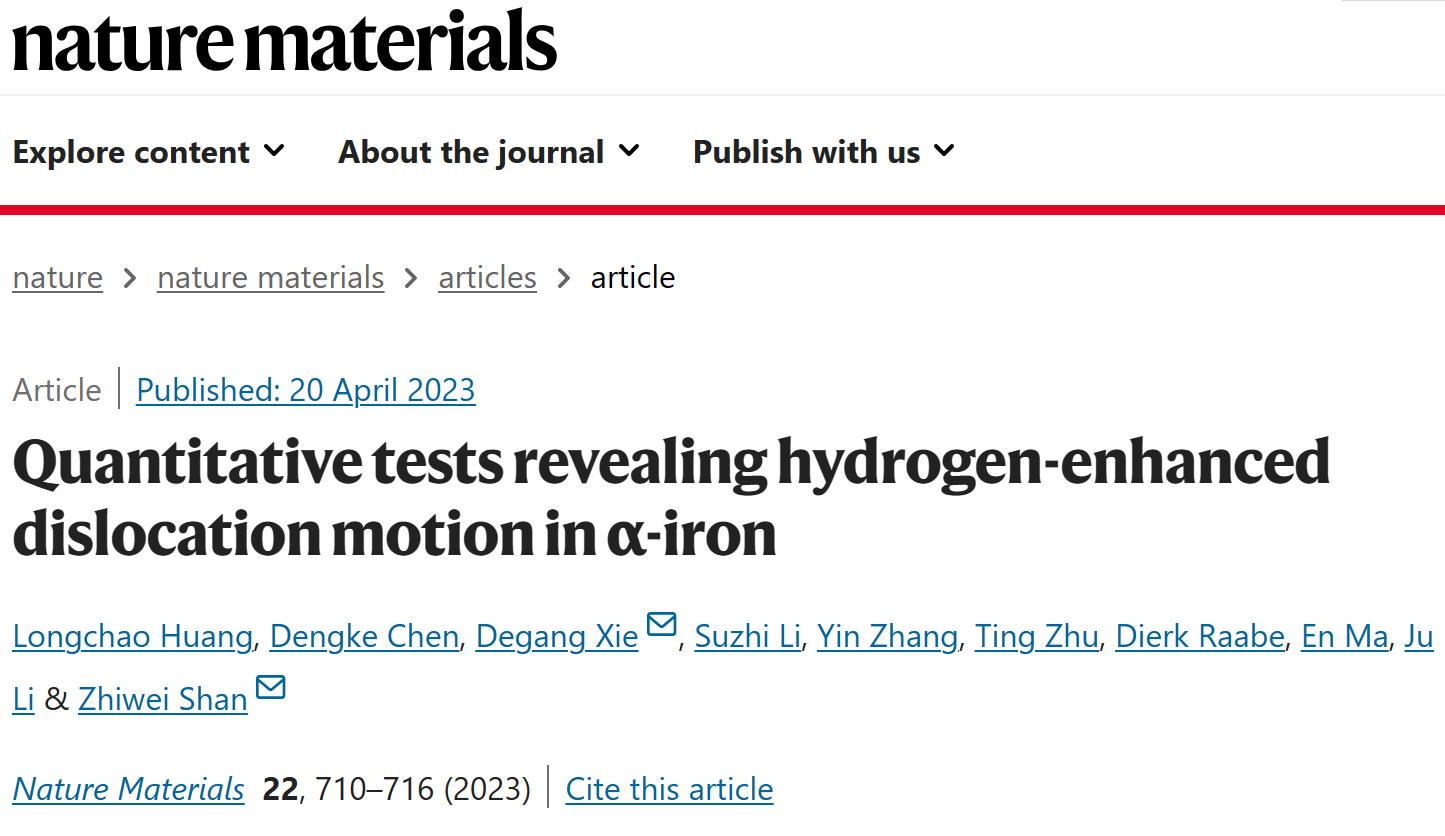
Hydrogen embrittlement jeopardizes the use of high-strength steels in critical load-bearing applications. However, uncertainty regarding how hydrogen affects dislocation motion, owing to the lack of quantitative experimental evidence, hinders our understanding of hydrogen embrittlement. Here, by studying the well-controlled, cyclic, bow-out motions of individual screw dislocations in α-iron, we find that the critical stress for initiating dislocation motion in a 2 Pa electron-beam-excited H2 atmosphere is 27–43% lower than that in a vacuum environment, proving that hydrogen enhances screw dislocation motion. Moreover, we find that aside from vacuum degassing, cyclic loading and unloading facilitates the de-trapping of hydrogen, allowing the dislocation to regain its hydrogen-free behaviour. These findings at the individual dislocation level can inform hydrogen embrittlement modelling and guide the design of hydrogen-resistant steels.
Link:Quantitative tests revealing hydrogen-enhanced dislocation motion in α-iron | Nature Materials